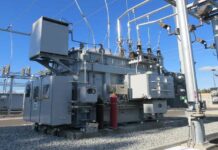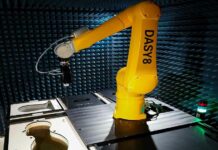Looking for Health & Safety consultants or CDM Coordinators? Construction Training everything from NPORS to NRSWA Find UK companies supplying Fall Arrest Systems Catch up with Digger on the Construction Plant & Equipment Blog, @TheDiggerBlog View construction machinery on Construction Index TV View over 400 UK Plant Hire Companies on Construction Index Looking to buy Construction Plant and Equipment?
The Construction Plant-hire Association is leading research into the problem of unintentional machine operation. David Taylor reports
Last year the Health & Safety Executive proposed a change to EN 474-1 – the British Standard for general safety for earthmoving machinery. On the face of it, the change was fairly minor. It proposed an amendment to the clause dealing with the inadvertent activation of excavator controls, which states: “Controls which can cause a hazard due to inadvertent activation shall be so arranged or deactivated or guarded so as to minimise the risk when the operator gets into or out of the operators [sic] station. The deactivation device shall either be self acting or acting by compulsory actuation of the relevant device”.
The HSE wanted to tighten this clause up to further guard against the risk of inadvertent operation. It put forward two possible extensions to the clause. One read: “A safety device which isolates the hydraulic controls meets this requirement if it is designed and positioned to prevent its own inadvertent actuation. It should not be possible to simultaneously deactivate the safety device and inadvertently actuate a control for example by the operators [sic] clothing snagging on the safety device and control simultaneously. If this cannot be achieved a second device or additional control method will be required”. Alternatively: “If a safety device is installed as a deactivation device it should be designed such that it cannot be inadvertently actuated (for example by an operators [sic] jacket snagging on the device). If this cannot be achieved a second device or additional control method will be required”.
For some in the plant industry, this looked like a belt-and-braces approach too far. Some simply didn’t accept that the so-called inadvertent operation of controls (IOOC) was the problem HSE seemed to think it was. The problem of IOOC appears to have emerged from an accident in 2005 in which a worker became trapped between the boom and the cab of a mini-excavator. Although the HSE suggested that manufacturers address the issue, a spokesman for the manufacturer said: “I have never heard of any serious accident [caused by IOOC] except the one fatality in 2005”.
Less than a year on, the situation has altered and IOOC (now given the pro-active title of Preventing Unintentional Movement of Plant and hence the more satisfying acronym: PUMP) is widely accepted within the industry. Unintentional movement can occur not only when clothing catches on a control lever but also when the operator stands up or leaves the cab and in so doing, moves one of the machine controls. Deactivation devices – such as “dead-man’s handles” and seat belt switches certainly help reduce the risk. But Construction Plant-hire Association advisor Tim Watson says the situation is now recognised as being far more complicated. “We’ve done a lot of research and there’s actually a lot of anecdotal evidence that this problem is widespread,” says Watson, who sits on the CPA-funded Plant Safety Group of the Strategic Forum for Construction. He also believes there’s a lot of under- reporting of the problem. “It seems to be a common problem, but if nobody’s hurt and nothing’s damaged, people tend to say ‘well it’s just one of those things’ and it doesn’t get reported,” he explains. And it’s not just unintended operation that’s the problem, he says. “There’s also intentional operation that results in unintended movement.” The most obvious example of this is the situation in which the operator of a 360o excavator slews through 180o and then – forgetting that the machine’s orientation has reversed, accidentally tracks forwards instead of backward, or vice-versa. This shouldn’t be difficult to tackle, says Watson, who points out that many slewing mobile elevating work platforms have systems to prevent this happening, whereas excavators don’t. More research is needed, says Watson, who says that the Plant Safety Group has set up an ad-hoc industry group to discuss design issues and come up with recommendations to feed back to the BSI committee.
The group comprises representatives from a broad spectrum of interested parties, ranging from main contractors, hirers and machine owners to clients, including the Environment Agency, and training bodies. “It’s been welcomed by manufacturers because it’s the first time they’ve had proper feedback on this issue from users,” says Watson. Among the issues to be explored is the obvious one of technology and its deployment. “It’s not as simple as it might seem,” warns Watson. “You can install cameras all round the machine and have an array of monitors, but that’s no good if they block the view out of the cab,” he says. Too much technology can also distract the operator or even cause operators to drop their guard if they feel over-protected, he adds.
The Plant Safety Group hopes to formulate guidance on the issue within the year, with proposals published on the CPA website for consultation in the spring.




























